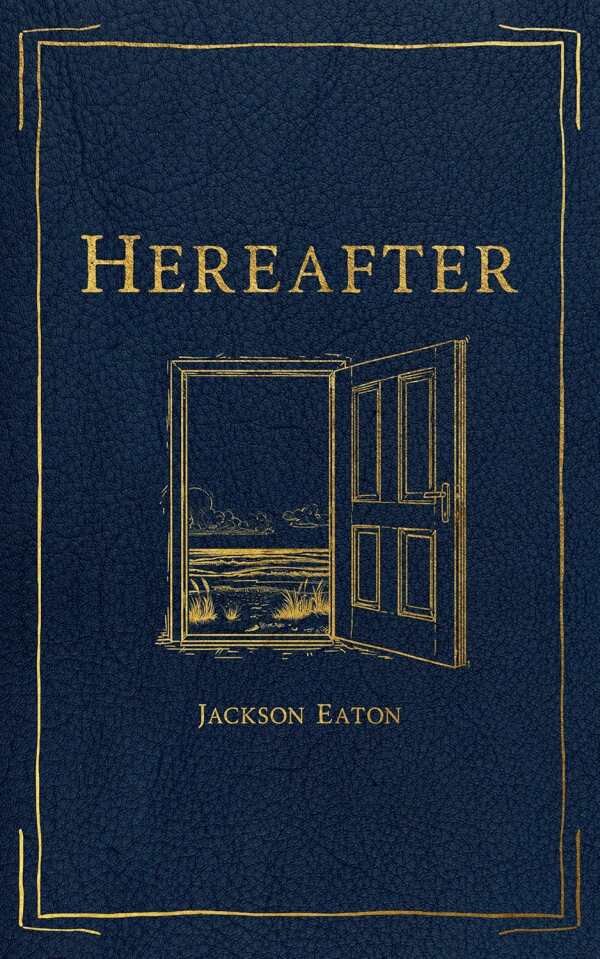Hereafter
Two souls from different earthly eras make their way toward eternal life together in the sweet novel Hereafter.
A man learns to navigate the afterlife in Jackson Eaton’s inventive novel Hereafter.
Thirty-year-old Benjamin is a physicist working on a secret government project to “defeat gravity.” After discovering the solution, he dies in a home explosion. The novel opens with his arrival in the afterlife, where he has to progress through various “cycles” of learning on his path to enlightenment and eternal life.
None of Earth’s laws apply in the afterlife, which operates “in defiance of time” and in which no one has a body because only their minds, or souls, have survived. Each mind creates its own reality, and the dead can enter each other’s mind worlds. Benjamin’s mind world is a beautiful house with an ocean view and homemade food, the type of environment he lacked on Earth due to his dysfunctional family; he also reunites with his beloved childhood dog, Kallista. He is mentored in his progress toward enlightenment by Hoffman, an “adjunct” further along in his own journey. Another adjunct is Fiona, who is young now but was a great-grandmother when she died.
As Hoffman and Fiona guide Benjamin in accepting his new reality, his relationship with Fiona deepens; they form “a true emotional and spiritual connection,” becoming “as one.” Fiona’s love helps Benjamin let go of the pain and loneliness he felt on Earth as the two make their way toward eternal life. When Hoffman is unable to move on to the next cycle and risks going down a dark path, Benjamin acts to help his mentor and friend.
Its prose crisp, the book features lush descriptions, as of “petals like pink and orange hand towels and vibrant, green leaves like elephant ears,” alongside interjections of humor. In exchanges between Benjamin and Fiona, who lived during different eras, misunderstandings arise: She doesn’t know what “downloading” means, and he explains by using a printed book analogy. Philosophical questions about time, memory, and existence are also raised, though these are not always answered; often, people simply posit that human understandings of these concepts are inherently limited. Versions of the devil and a comical supreme being also appear, though these jar with the notion that, on Earth, “right and wrong, good and evil” were simply “labels to give actions … that had consequences.” The suffering that people faced in their lives is ill reckoned with, too.
Further, as the book focuses so much attention on developing the afterlife and its upending of earthly rules, its characterizations fall to the wayside. Who Fiona, Benjamin, and Hoffman were before their deaths is hazy; they rarely reconnect with their deceased loved ones, either. There are thus gaps when it comes to understanding who they are and where they are headed. Indeed, while Benjamin evolves in his understanding of life and love, Fiona is static in her knowledge until the last chapters, and their union is too idealized, straining credulity. In addition, several characters appear whose stories are meant to serve as lessons for Benjamin, but they disappear from the text after, leaving loose ends. And toward the end of the book, explanations for people’s actions are pronounced in an overt and distracting manner, impeding final satisfaction.
In the philosophical novel Hereafter, a man begins his life after death, his progression assisted by two new friends.
Reviewed by
Yelena Furman
Disclosure: This article is not an endorsement, but a review. The publisher of this book provided free copies of the book and paid a small fee to have their book reviewed by a professional reviewer. Foreword Reviews and Clarion Reviews make no guarantee that the publisher will receive a positive review. Foreword Magazine, Inc. is disclosing this in accordance with the Federal Trade Commission’s 16 CFR, Part 255.

